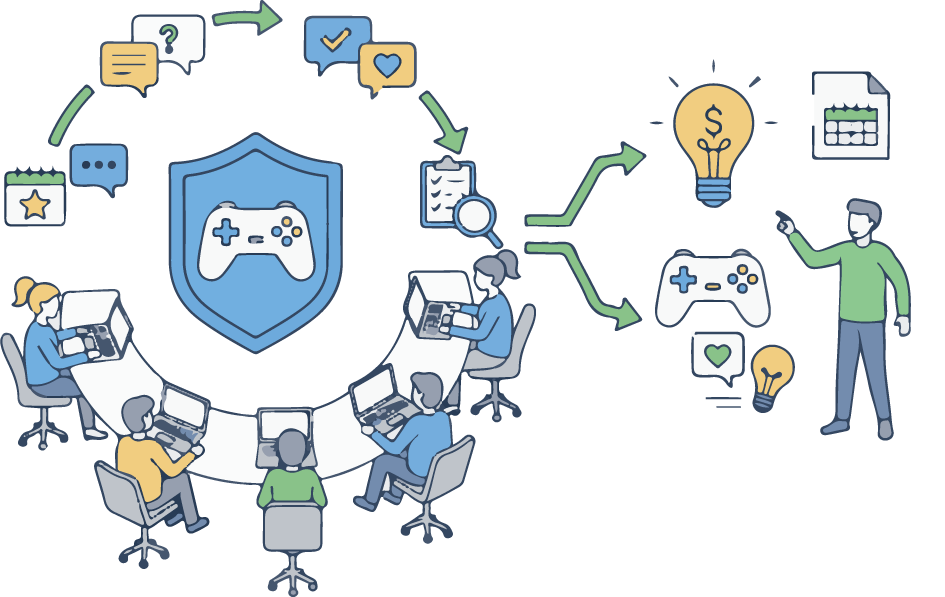Now Reading: Agile Retrospective: Gaming Sector Case Study
1
-
01
Agile Retrospective: Gaming Sector Case Study
Agile Retrospective: Gaming Sector Case Study
How a Gaming Studio Used Structured Retrospectives to Generate New Features

The Challenge: The Retrospective Rut
PixelForge Games’ retrospectives were stuck in a loop of discussing bugs and process friction. They were missing a huge opportunity to harness the team’s creative energy to improve the product itself.
The Process: Designing for Creativity and Innovation
- Step 1: Prepare for Retrospective: The facilitator’s objective was ‘Generate one new testable feature idea.’ All pre-session data gathering was focused on player feedback and engagement metrics.
- Step 2: Conduct the Retrospective: Instead of standard activities, a ‘Futurespective’ was planned, guiding the team to imagine the perfect future state of the game.
- Step 3: Analyze & Prioritize: A wealth of new ideas emerged. The team used a planned ‘Impact/Effort Matrix’ activity to identify low-effort, high-impact features.
- Step 4: Implement & Monitor: The most promising ideas were moved into the ‘Task Plan’ not as bug fixes, but as tasks like ‘Prototype the new power-up system,’ bridging the gap between idea and backlog.
- Step 5: Get Final Report: The report was shared with the Product team, showcasing a pipeline of team-generated, prioritized ideas ready for consideration.
The Results: A Continuous Flow of Innovation
The number of new, viable feature ideas generated in these sessions increased by 200%. Over the next two quarters, three of these ideas were fully developed and released, leading to a 15% increase in daily player engagement. Retrospectives were no longer just about looking back; they became a critical part of product strategy.

